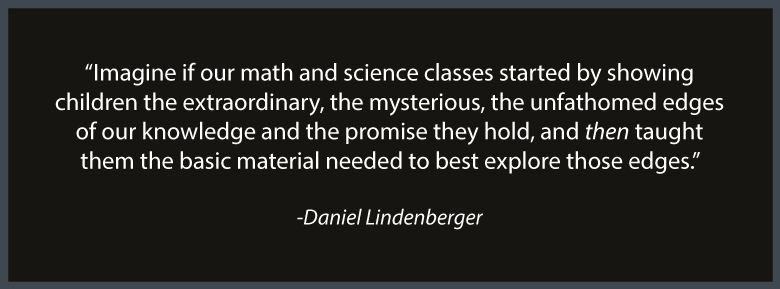Written by: Candace Herrod
Tuesday June 7, 2016
My Grade 9 Science teacher, Mr. Murray, would swear in class and occasionally disappear into his chemical storage room and return smelling like smoke. If you happened to get him on a tangent you could end up with a colourful education on any number of subjects that he was passionate about, like composting.
Why do his students remember him and his outrageous tangents? It was because he had the courage to tap into his own passions for all his class to see, and that’s what made what he taught so memorable, even 20 years later. He connected with his students, made them laugh, and was real and relatable.
Student connectedness is an important topic in education, especially with the rise of tech in the classroom and an educational system that is having a hard time keeping up. The impetus to assess factors affecting student engagement is more important than ever.
Daniel Lindenberger has been a tutor specializing in work with the profoundly gifted for the last two years, as well as lead programmer for Civic Mirror, a simulation-based education program allowing students to learn civics by effectively turning their classroom into a country.
When discussing the kinds of challenges teachers face when trying to gain student connectedness, he points back to the system itself. “The biggest impediment to student connectedness is chronically underfunded schools which force teachers to try to do too much with too little. Add to that a teach-to-test environment, and the opportunities to make meaningful connections primarily come with heroic efforts from the teachers.”
With a reliance on quantitative assessment embedded deeply in the education system, how can educators tweak their teaching style to better engage their students?
“We need to encourage work and challenge, rather than just celebrating right answers,” Lindenberger stresses.
Lindenberger has more opportunity to connect and engage with his students than a teacher with a class of 30 because he has the luxury of working with one student at a time. But the methods he uses can be adapted for more traditional teaching environments. He makes careful observations to determine what a student is most passionate about, and pays close attention to how they learn. By tapping into their interests you can start to generate rapport and achieve “buy in,” which is the essential ingredient to a student feeling connected to his/her teacher and engaged in the subject matter. Research has demonstrated time and again that a school’s climate and the level of connectedness between student and teacher has a lasting impact on key areas such as school drop out rates, truancy, vandalism, violence, gang membership, substance abuse, and teen pregnancy.
What are some other strategies that teachers can employ to draw their students out? How about authenticity? Vulnerability? Passion! Teachers need to tie in a students’ interests in meaningful ways to understand their modes of learning. One of Lindenberger’s math students really enjoys computer programming, so they work together on writing programs to calculate Aliquot sequences or define challenges in terms of “problem spaces” and discuss which forms of artificial intelligence would be best for coming up with solutions. For another, robotics are of interest, so a Lego EV3 Robot is sometimes incorporated into their work. In both cases, it has helped the students integrate the world of mathematics with their other interests.
Lindenberger also feels that we often teach backwards. “Imagine if our math and science classes started by showing children the extraordinary, the mysterious, the unfathomed edges of our knowledge and the promise they hold, and then taught them the basic material needed to best explore those edges.” In a tutoring environment, Lindenberger is not forced to stay within the constraints of the grade level like his traditional school colleagues. Maybe that rigidity is another inherent challenge with the traditional education system as it stands today.

Parents can also support and encourage their children to engage with the material they’re learning. If a parent knows the topic, they should share with their children their passion about it. I distinctly remember my mother taking me outside with a full glass of water in her hand, and madly swinging her arm around in circles to teach me about centrifugal forces because the water stayed in the cup even when it was upside down. For subjects that parents don’t understand, they should be transparent about that, and can ask their child to teach them about it themselves. There is no better way for a child to learn than by teaching someone else.
Programming robots and discussing composting were undoubtedly not in the curriculum in Lindenberger or Murray’s classrooms, but it just may be the approach needed to shake up our concept of what education should be. The students think so.

